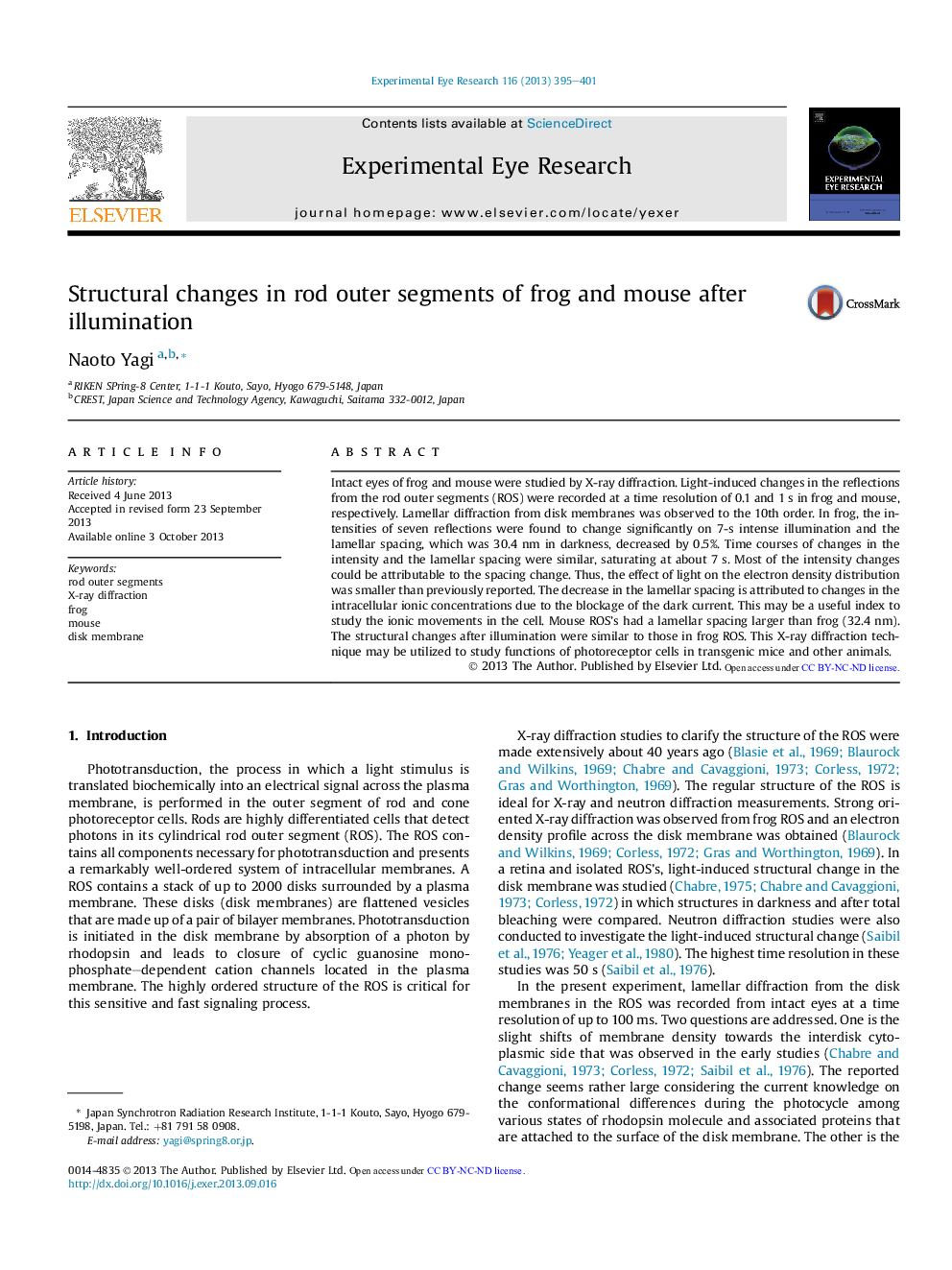| Article ID | Journal | Published Year | Pages | File Type |
|---|---|---|---|---|
| 6197230 | Experimental Eye Research | 2013 | 7 Pages |
â¢Light-induced structural change in disk membrane was studied by X-ray diffraction.â¢Diffraction from rod outer segment was recorded from intact eyes of frog and mouse.â¢Electron density across a disk membrane changes only slightly on illumination.â¢Rod outer segment shrinks by 0.5-1% upon intense illumination.
Intact eyes of frog and mouse were studied by X-ray diffraction. Light-induced changes in the reflections from the rod outer segments (ROS) were recorded at a time resolution of 0.1 and 1Â s in frog and mouse, respectively. Lamellar diffraction from disk membranes was observed to the 10th order. In frog, the intensities of seven reflections were found to change significantly on 7-s intense illumination and the lamellar spacing, which was 30.4Â nm in darkness, decreased by 0.5%. Time courses of changes in the intensity and the lamellar spacing were similar, saturating at about 7Â s. Most of the intensity changes could be attributable to the spacing change. Thus, the effect of light on the electron density distribution was smaller than previously reported. The decrease in the lamellar spacing is attributed to changes in the intracellular ionic concentrations due to the blockage of the dark current. This may be a useful index to study the ionic movements in the cell. Mouse ROS's had a lamellar spacing larger than frog (32.4Â nm). The structural changes after illumination were similar to those in frog ROS. This X-ray diffraction technique may be utilized to study functions of photoreceptor cells in transgenic mice and other animals.
